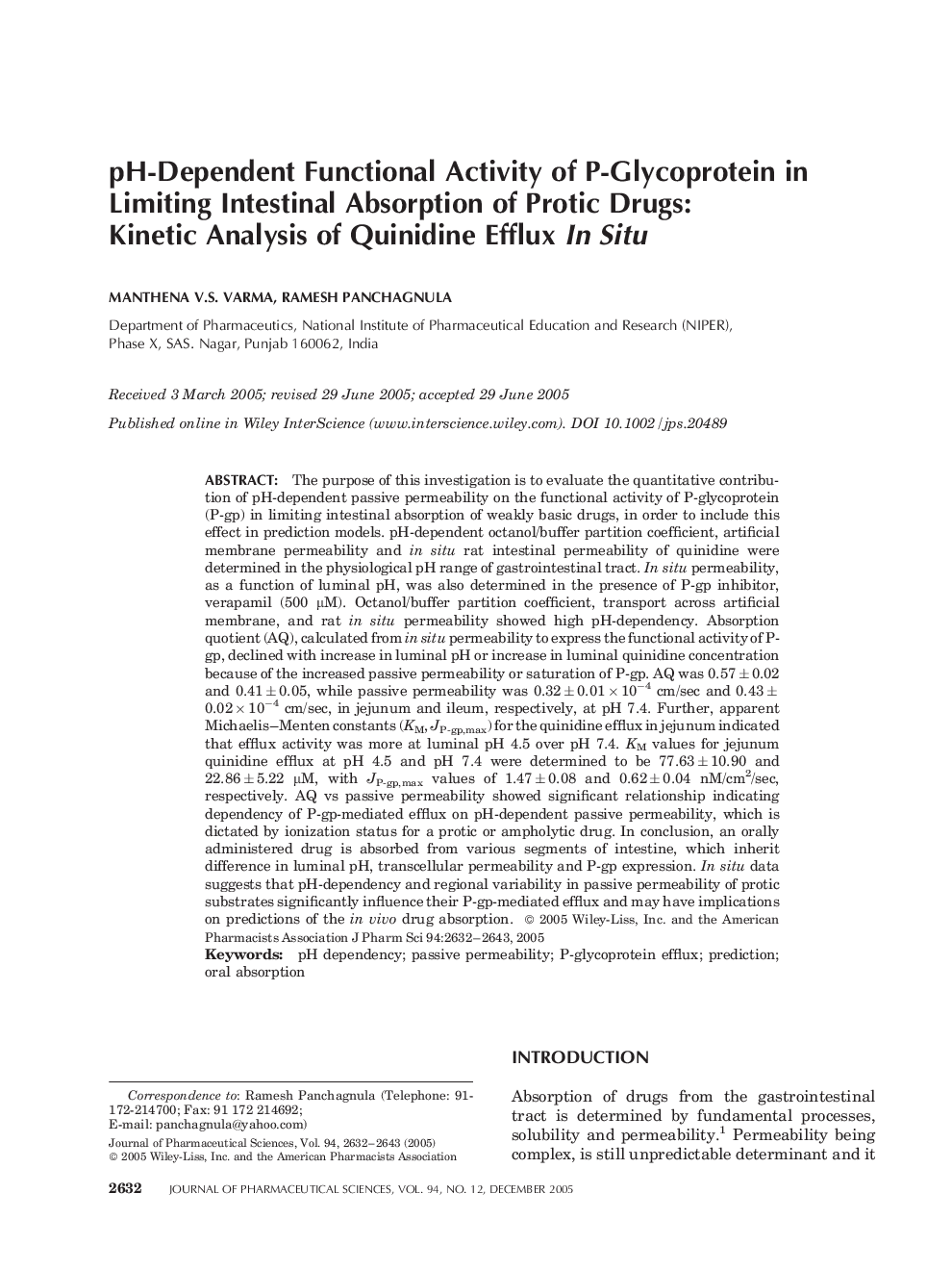| Article ID | Journal | Published Year | Pages | File Type |
|---|---|---|---|---|
| 2488075 | Journal of Pharmaceutical Sciences | 2005 | 12 Pages |
Abstract
The purpose of this investigation is to evaluate the quantitative contribution of pH-dependent passive permeability on the functional activity of P-glycoprotein (P-gp) in limiting intestinal absorption of weakly basic drugs, in order to include this effect in prediction models. pH-dependent octanol/buffer partition coefficient, artificial membrane permeability and in situ rat intestinal permeability of quinidine were determined in the physiological pH range of gastrointestinal tract. In situ permeability, as a function of luminal pH, was also determined in the presence of P-gp inhibitor, verapamil (500 µM). Octanol/buffer partition coefficient, transport across artificial membrane, and rat in situ permeability showed high pH-dependency. Absorption quotient (AQ), calculated from in situ permeability to express the functional activity of P-gp, declined with increase in luminal pH or increase in luminal quinidine concentration because of the increased passive permeability or saturation of P-gp. AQ was 0.57 ± 0.02 and 0.41 ± 0.05, while passive permeability was 0.32 ± 0.01 Ã 10â4 cm/sec and 0.43 ± 0.02 Ã 10â4 cm/sec, in jejunum and ileum, respectively, at pH 7.4. Further, apparent MichaelisâMenten constants (KM, JP-gp,max) for the quinidine efflux in jejunum indicated that efflux activity was more at luminal pH 4.5 over pH 7.4. KM values for jejunum quinidine efflux at pH 4.5 and pH 7.4 were determined to be 77.63 ± 10.90 and 22.86 ± 5.22 µM, with JP-gp,max values of 1.47 ± 0.08 and 0.62 ± 0.04 nM/cm2/sec, respectively. AQ vs passive permeability showed significant relationship indicating dependency of P-gp-mediated efflux on pH-dependent passive permeability, which is dictated by ionization status for a protic or ampholytic drug. In conclusion, an orally administered drug is absorbed from various segments of intestine, which inherit difference in luminal pH, transcellular permeability and P-gp expression. In situ data suggests that pH-dependency and regional variability in passive permeability of protic substrates significantly influence their P-gp-mediated efflux and may have implications on predictions of the in vivo drug absorption. © 2005 Wiley-Liss, Inc. and the American Pharmacists Association.
Related Topics
Health Sciences
Pharmacology, Toxicology and Pharmaceutical Science
Drug Discovery
Authors
Manthena V.S. Varma, Ramesh Panchagnula,
